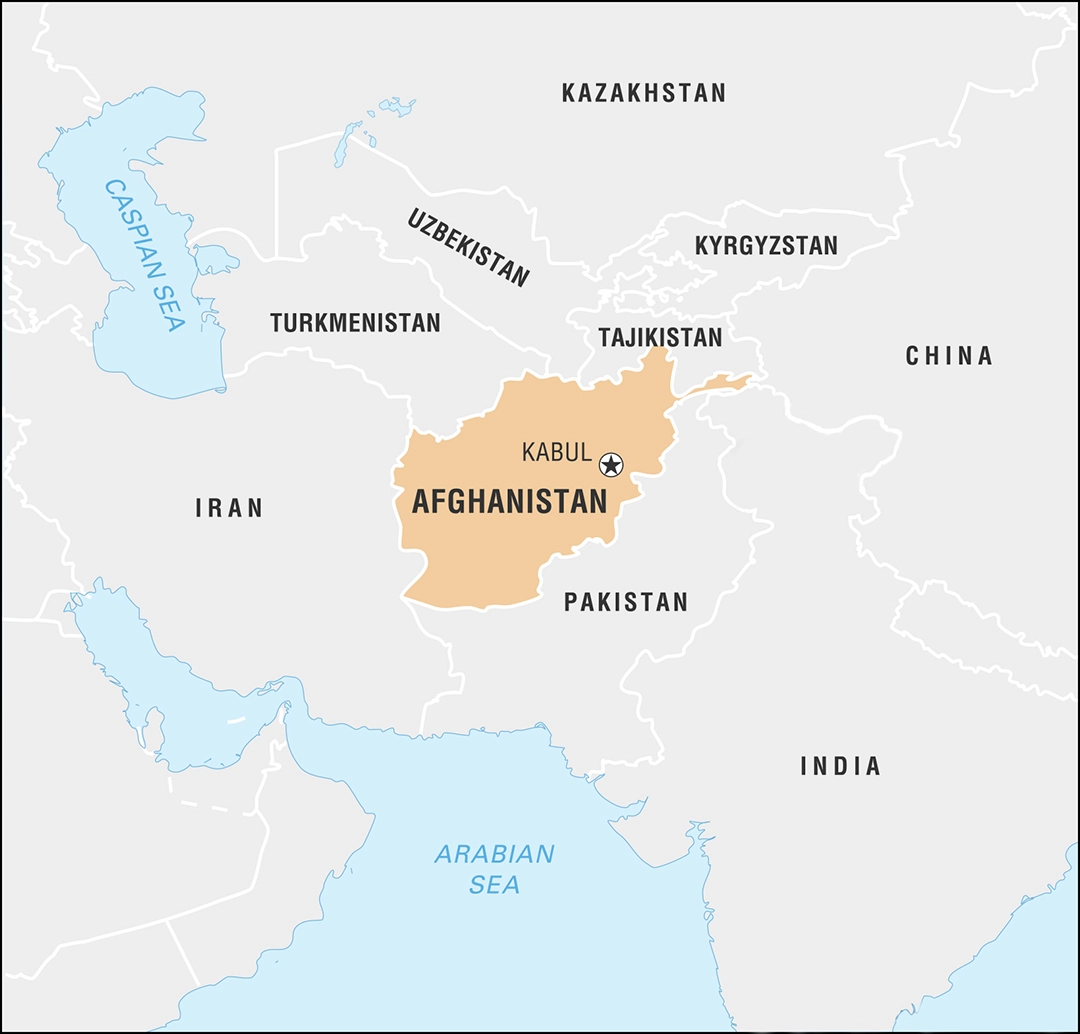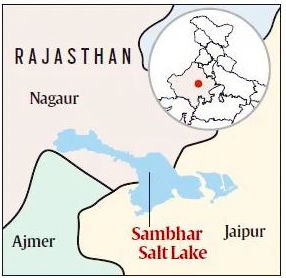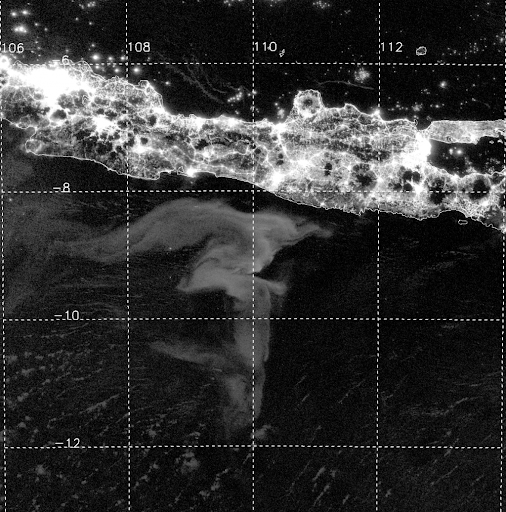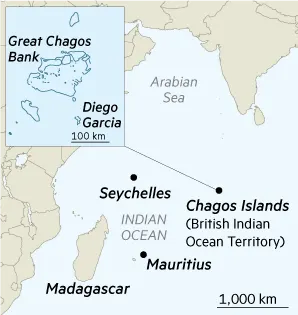International Relations
China’s Interests in Afghanistan
Why in News
Recently, following the withdrawal of US forces from Afghanistan, China has emerged as one of the first nations to develop diplomatic channels with the Taliban. This engagement emanates from China's economic and security interest in Afghanistan.
Key Points
- About China’s Economic Interest in Afghanistan:
- Reserves of Lithium: Afghanistan is probably home to what may be the world’s largest reserves of lithium.
- Lithium is the key ingredient of the large-capacity lithium-ion batteries that are widely used in electric vehicles and the renewable energy industry.
- China dominates Lithium-Ion Battery Production worldwide and it may seek long-term a contract with the Taliban to develop Afghanistan’s massive untapped lithium reserves in return for mining rights and ownership arrangements.
- Mineral Deposits: Afghanistan is sitting on mineral deposits estimated to be worth up to $3 trillion.
- Afghanistan is rich in several resources such as gold, oil, bauxite, rare earths, chromium, copper, natural gas, uranium, coal, iron ore, lead, zinc, gemstones, talc, sulphur, travertine, gypsum and marble.
- China’s Belt and Road Initiative: China’s strategic Belt-and-Road Initiative (BRI) could get more reach if it is able to extend the initiative from Pakistan to Afghanistan, with a Peshawar-to-Kabul motorway.
- This would create a much shorter land route for faster and convenient access to markets in the Middle East for Chinese goods.
- Reserves of Lithium: Afghanistan is probably home to what may be the world’s largest reserves of lithium.
- About China’s Security Interest in Afghanistan:
- According to the UN security council, the East Turkestan Islamic Movement (ETIM) had roots in Afghanistan as it received support from the Taliban and Al Qaeda in the 2000s.
- ETIM is an Uyghur Islamic extremist organisation founded in Western China with the aim to establish an independent state called East Turkestan in the place of Xinjiang.
- Thus, ETIM poses a direct threat to China’s national security and territorial integrity.
- China is worried that Afghanistan could become a potential haven for the Uyghur extremist group, which could retaliate against the widespread repression of Uyghurs.
- According to the UN security council, the East Turkestan Islamic Movement (ETIM) had roots in Afghanistan as it received support from the Taliban and Al Qaeda in the 2000s.
- Impact of China-Taliban Engagement on India:
- A new route of BRI through Kabul would render India’s reluctance to join BRI less consequential.
- WIth China-Taliban engagement, there can be formation of a new regional geopolitical axis between China-Pakistan-Taliban, which may go against the interests of India.
- China’s stronghold in Afghanistan will also hamper connectivity projects to Central Asia via Afghanistan. For example, Chabahar Port, International North South Transport Corridor (INSTC), TAPI Pipeline.
Way Forward
- India Engaging with the Taliban: Talking to Taliban would allow India to seek security guarantees from the insurgents in return for continued development assistance.
- India can also persuade the Taliban to explore the possibility of its autonomy from Pakistan.
- Fighting Global Terrorism: There is a need for the global community to fight against the global concern of terrorism.
- In this context, it high time to adopt the Comprehensive Convention on International Terrorism (proposed by India at UN in 1996).
International Relations
Environment and Agricultural Ministerial Meeting: BRICS
Why in News
Recently, the BRICS (Brazil, Russia, India, China and South Africa) Environment and Agriculture Ministers’ Meeting was held.
- BRICS brings together the major emerging economies of the world, hosting 41% of the world population, contributing 24% of the world Gross Domestic Product (GDP) and over 16% share in world trade.
- India is the chair of the BRICS grouping for 2021.
Key Points
- 7th BRICS Environment Ministerial 2021:
- Area of Focus:
- Air pollution, circular economy, combating marine plastic litter and single use plastic product pollution, forestry, including the prevention and mitigation of forest fires, and conservation of biodiversity.
- Agreed to focus on cooperation on waste management.
- As the efficient management of wastes including recovery of energy and secondary raw materials is crucial for resource conservation, healthy ecosystem and quality of life of the people.
- New Delhi Statement on Environment was Adopted:
- It is aimed at furthering the spirit of Cooperation for Continuity, Consolidation and Consensus in Environment among the BRICS Nations, especially ahead of the COP15 Biodiversity meet and COP26 (Climate Change) later this year.
- BRICS Resource Efficiency and Circular Economy Dialogue:
- India has launched this initiative to facilitate an exchange of knowledge and best practices on waste management, resource efficiency and circular economy.
- The countries will also engage in dialogues on construction, agriculture, solar, biofuels, packaging, electronic wastes, food, water and textiles.
- India’s Stand:
- Acknowledged that the Climate Change 2021 Report: IPCC may be the last signal for taking concrete collective global actions against global environmental and climate challenges.
- Actions should be guided by equity, national priorities and circumstances, and the principles of “Common but Differentiated Responsibilities and Respective Capabilities (CBDR-RC)”.
- CBDR–RC is a principle within the United Nations Framework Convention on Climate Change (UNFCCC) that acknowledges the different capabilities and differing responsibilities of individual countries in addressing climate change.
- Area of Focus:
- 11th Meeting of Agriculture Ministers of BRICS:
- Theme:
- BRICS Partnership for Strengthening Agro Biodiversity for Food and Nutrition Security.
- BRICS Agricultural Research Platform:
- It has been set up in India for strengthening the cooperation in the field of agricultural research & innovations amongst the BRICS member States.
- It has been developed by India.
- The platform as a global platform for science-led agriculture will help in addressing the issues of world hunger, undernutrition, poverty and inequality by promoting sustainable agricultural development through strategic cooperation in agriculture and allied sectors.
- It has been set up in India for strengthening the cooperation in the field of agricultural research & innovations amongst the BRICS member States.
- Action Plan of 2021-24 for Agricultural Cooperation Adopted:
- Focuses on the themes of food security, welfare of farmers, conservation of agrobiodiversity, resilience of food and agricultural production systems, promotion of digital agricultural solutions etc.
- India's Stand:
- Highlighted its efforts in preserving the agro-biodiversity by :
- Establishing and maintaining the National Gene banks for plants, animals, fish, insects and agriculturally important microorganisms at different respective Bureaus.
- Actively promoting the diversification of its agri-food systems through countrywide programs such as pulses, oilseeds, horticultural crops, National Bamboo Mission and the recently launched National Palm Oil Mission.
- The objective of these programs is to increase the income of the farmers along with providing diversification in both farm and plate.
- Highlighted its efforts in preserving the agro-biodiversity by :
- Theme:
Biodiversity & Environment
New Guidelines for Poultry Farmers
Why in News
According to new guidelines for poultry farmers, small and marginal poultry farmers in India will now have to take measures similar to their bigger counterparts to prevent environmental pollution.
- Till now, small poultry farms in India were exempt from environmental laws.
- In 2020, the National Green Tribunal stated that the Central Pollution Control Board (CPCB) should revisit the guidelines for keeping poultry farms in the green category and free from air, water and environmental protection laws.
Status of Poultry Birds in India
- According to the 20th Livestock Census, there are 851.8 million poultry birds in India.
- About 30% of this is ‘backyard poultry’ or small and marginal farmers.
- Chickens, turkeys, ducks, geese, etc, are reared in poultry farms for meat and eggs.
- Tamil Nadu, Andhra Pradesh, Telangana, West Bengal, Maharashtra, Karnataka, Assam and Kerala have the highest poultry populations.
Key Points
- Major Provisions:
- New Definition of Poultry Farmer:
- Small Farmers: 5,000-25,000 birds
- Medium Farmers: More than 25,000 and less than 1,00,000 birds
- Large Farmers: More than 1,00,000 birds
- Certificate of Consent Required:
- For establishing and operating a medium-sized poultry farm.
- This will have to be taken from the State Pollution Control Board or Committee under the Water Act, 1974 and the Air Act, 1981.
- Permission will be valid for 15 years.
- Implementing Agency:
- The Animal Husbandry Department will be responsible for implementing the guidelines at the state and district level.
- Reducing Pollution:
- Poultry farms should have a ventilated room to reduce the gaseous pollution from the birds.
- Also, care should be taken so that poultry faeces do not mix with running water or any other pesticide.
- A farm should be set up 500 metres away from a residential area, 100 metres from rivers, lakes, canals and drinking water sources, 100 metres from national highways and 10-15 metres from village footpaths and rural roads.
- New Definition of Poultry Farmer:
- Need:
- Poultry production is associated with a variety of environmental pollutants, including oxygen-demanding substances, ammonia, solids, besides it attracts flies, rodents, dogs and other pests that create local nuisances and carry diseases.
- Poor management of manure, litter and wastewater etc. adversely affects the living in the vicinity.
- Furthermore, intensive poultry production may be responsible for greenhouse gasses, acidification and eutrophication.
- The NGT in 2020 said that sustainable development is a part of the right to life and the state authorities are under obligation to protect the environment as per sustainable development concept.
- Poultry production is associated with a variety of environmental pollutants, including oxygen-demanding substances, ammonia, solids, besides it attracts flies, rodents, dogs and other pests that create local nuisances and carry diseases.
- Some Initiatives for Poultry:
- Poultry Venture Capital Fund (PVCF):
- The Department of Animal Husbandry and Dairying is implementing it under “Entrepreneurship development and Employment generation” (EDEG) of the National Livestock Mission.
- It is a bankable programme and the Central Government is providing subsidy through National Bank for Agricultural and Rural Development (NABARD) for those beneficiaries taking loan for PVCF.
- National Livestock Mission:
- Different programmes under the National Livestock Mission under which financial assistance is provided to States/Union Territories for implementation of Rural Backyard Poultry Development (RBPD) and Innovative Poultry Productivity Project (IPPP).
- Assistance to States for Control of Animal Diseases (ASCAD) Scheme:
- ASCAD under “Livestock Health and Disease Control” (LH&DC) which covers the vaccination of economically important poultry diseases viz., Ranikhet Disease, Infectious Bursal Disease, Fowl Pox etc., including control and containment of emergent and exotic diseases like Avian Influenza.
- Poultry Venture Capital Fund (PVCF):
Science & Technology
Merger of Three Supermassive Black Holes
Why in News
Recently, the Department of Science and Technology reported that Indian scientists have discovered the merger of three supermassive black holes from as many galaxies to form a triple Active Galactic Nucleus.
- Many Active Galactic Nuclei (AGN) pairs have been detected in the past, but triple AGN are extremely rare, and only a handful has been detected before using X-ray observations.
Key Points
- Current Merger:
- Scientists were studying the AGN in the two massive barred spiral galaxies NGC7733 and NGC7734 when they detected unusual emissions from the centre of the latter and a curious movement of a large bright clump within it, having a different velocity than that of NGC7733.
- As the third one was a separate galaxy, the scientists named it NGC7733N.
- All three merging black holes were part of galaxies in the Toucan constellation.
- Toucan Constellation: It is located in the southern hemisphere of the sky. It is visible at latitudes south of 15 degrees between August and October. It is completely below the horizon for anyone north of 30 degrees. It is a small constellation, occupying an area of 295 square degrees. This ranks it 48th in size among the 88 constellations in the night sky.
- They are quite far away when compared to the nearest galactic neighbour – the Andromeda galaxy is 2.5 million light years away.
- Scientists were studying the AGN in the two massive barred spiral galaxies NGC7733 and NGC7734 when they detected unusual emissions from the centre of the latter and a curious movement of a large bright clump within it, having a different velocity than that of NGC7733.
- Active Galactic Nuclei:
- There are supermassive blackholes, which are several million solar masses in size, at the centres of galaxies, and these are known as AGN.
- At the center of most galaxies, there’s a massive black hole with a huge mass accumulating gas, dust, and stellar debris around it. AGN is formed when the gravitational energy of these materials, being pulled towards the black hole, is converted into light.
- Since they “accrete“ matter, they often have a glow around them which can be observed using light spectroscopy.
- Collision of Galaxies:
- If two galaxies collide, their black hole will also come closer by transferring the kinetic energy to the surrounding gas.
- The distance between the blackholes decreases with time until the separation is around a parsec (3.26 light-years).
- The two black holes are then unable to lose any further kinetic energy to get even closer and merge. This is known as the final parsec problem.
- Significance of the Finding:
- The presence of a third black hole can solve the final parsec problem. The two galaxies can come closer when another black hole or a star passes by and takes away some of their combined angular momentum.
- The finding shows that multiple accreting black holes [AGN] may be more common in our universe and especially common in galaxy groups. So the growth of black holes may be driven by such mergers in groups.
Black Hole
- It refers to a point in space where the matter is so compressed as to create a gravity field from which even light cannot escape.
- The concept was theorized by Albert Einstein in 1915 and the term ‘black hole’ was coined in the mid-1960s by American physicist John Archibald Wheeler.
- Usually, the black holes belong to two categories:
- One category ranges between a few solar masses and tens of solar masses. These are thought to form when massive stars die.
- The other category is of supermassive black holes. These range from hundreds of thousands to billions of times that of the sun from the Solar system to which Earth belongs.
- In April 2019, the scientists at the Event Horizon Telescope Project released the first-ever image of a Black Hole (more precisely, of its shadow).
- Gravitational waves are created when two black holes orbit each other and merge.
Biodiversity & Environment
Shrinking of Sambhar Lake: Rajasthan
Why in News
According to a recent study, Sambhar Salt Lake in Rajasthan is constantly shrinking with the degradation of soil and water quality and a decline in the population of migratory birds.
Key Points
- Location:
- 80 km south-west of Jaipur in east-central Rajasthan, it is the country’s largest inland saline water body.
- Represents the depression of the Aravalli Range.
- Famous For:
- Production of brine/salt, houses one of the largest salt manufacturing units in the country.
- Thousands of migratory birds every year.
- Ramsar Site:
- A wetland of ‘international importance’ under the Ramsar Convention, declared in 1990.
- Rivers:
- Receives water from six rivers, namely Samaod, Khari, Mantha, Khandela, Medtha, and Roopangarh.
- Vegetation in Catchment Area:
- Mostly xerophytic type (Xerophyte is a plant adapted for growth under dry conditions).
- Fauna:
- Flamingoes, pelicans and the waterfowls are commonly sighted.
- Other Nearby Places:
- Shakambari Devi temple, Sambhar Wildlife Sanctuary.
- Major Concerns:
- Loss of Area:
- Almost 30% of the Sambhar Lake’s area had been lost to mining and other activities, including the illegal salt pan encroachments.
- Livelihoods of Local People:
- The loss in the area has also threatened the livelihoods of local people who have always lived in harmony with the lake and its ecology.
- The Aravalli hills have decreased by 0.1% (as compared to in 1971). The hill has been a natural barrier limiting the salt from spreading into other fertile areas.
- If this natural wall continues to fall it will force the people to migrate.
- Regarding Migratory Birds:
- The wetland has decreased whereas vegetation cover has increased, leading to the shortage of red algae which forms the main source of food for the migratory birds.
- The death of more than 20,000 birds belonging to about 10 species which migrate annually to the lake due to avian botulism in 2019.
- Loss of Area:
- Steps to Address the Issue:
- New Tourist Points:
- The State Government of Rajasthan has recently decided to identify new tourist points at Sambhar Salt Lake.
- The Lake forms part of the desert circuit in the Centre’s Swadesh Darshan Scheme.
- New destinations around the lake, including a salt museum, caravan park, bicycle track and gardens, will be finalised.
- The State Government of Rajasthan has recently decided to identify new tourist points at Sambhar Salt Lake.
- Salt Train:
- A “salt train”, which transported salt from the pans to a nearby refinery, will also be restarted.
- Saving the Area:
- The illegal salt production in the lake will be stopped through action against unauthorised borewells and pipelines laid in the region, while encroachments on the land will be removed with the help of police.
- For Migratory Birds:
- In 2020, the Rajasthan government decided to build temporary shelters for migratory birds near the Lake.
- New Tourist Points:
Way Forward
Sambhar Lake Development Authority should be formed by taking experts from multiple agencies. Also, coordination should be developed among the administration of three districts - Jaipur, Ajmer and Nagaur.
Indian History
Jallianwala Bagh Massacre
Why in News
The Prime Minister will inaugurate the newly renovated Jallianwala Bagh complex and museum in Amritsar (Punjab).
Key Points
- About:
- The complex is a memorial dedicated to those who were killed on 13th April, 1919 on orders of Brigadier General Reginald Edward Dyer.
- The tragedy, also known as the Massacre of Amritsar, exposed the inhuman approach of the British when the British troops under General Dyer opened fire into an unarmed crowd.
- Preclude to the Event:
- The massacre of April 1919 wasn't an isolated incident, rather an incident that happened with a multitude of factors working in the background.
- During World War I (1914–18), the British government of India enacted a series of repressive emergency powers that were intended to combat subversive activities.
- The Anarchical and Revolutionary Crimes Act of 1919 popularly known as Rowlatt Act (Black Act) which was passed on 10th March, 1919, authorized the government to imprison or confine, without a trial, any person associated with seditious activities which led to nationwide unrest.
- On 13th April 1919, a crowd of at least 10,000 men, women and children gathered in Jallianwala Bagh to request the release of Dr. Saifuddin Kitchlew and Dr. Satyapal.
- The two prominent leaders who were a symbol of Hindu-muslim unity, organised a peaceful protest against the Rowlatt act. They were arrested and taken out of the city.
- Brigadier-General Dyer on hearing about the meeting, deployed his troops and ordered them to open fire. The only exit to the park was sealed and indiscriminate firing took place killing hundreds of innocent civilians.
- Post Jallianwala Bagh Incident:
- The shooting was followed by the proclamation of martial law in the Punjab that included public floggings and other humiliations. Indian outrage grew as news of the shooting and subsequent British actions spread throughout the subcontinent.
- The Bengali poet and Nobel laureate Rabindranath Tagore renounced the knighthood that he had received in 1915.
- Mahatma Gandhi gave up the title of Kaiser-i-Hind, bestowed by the British for his work during the Boer War (South African War, 1899-1902).
- The sole Indian representative at that time in the Viceroy’s Executive Council - Chettur Sankaran Nair (1857-1934) - resigned from his post in protest.
- Lord Chelmsford was the Viceroy.
- On 14th October, 1919, the Disorders Inquiry Committee was formed to inquire about the massacre. It later came to be known as the Hunter Commission after the name of chairman, Lord William Hunter. It also had Indian members.
- The Hunter Commission in 1920 censured Dyer for his actions and was directed to resign from his appointment as Brigade Commander.
- The Indian National Congress appointed its own non-official committee that included Motilal Nehru, C.R. Das, Abbas Tyabji, M.R. Jayakar, and Gandhi to look into the shootings.
- Gandhi soon began organizing his first large-scale and sustained nonviolent protest (satyagraha) campaign, the Non Cooperation Movement (1920–22) which proved a step in the direction of ending the British rule of India 25 years later.
Indian Economy
Sweat Equity Rules: SEBI
Why in News
Recently, the Securities and Exchange Board of India (SEBI) has brought into effect the SEBI (Share Based Employee Benefits and Sweat Equity) Regulations, 2021. The regulations have widened the scope of employees who can be offered stock (equity) options.
- SEBI has merged the SEBI (Share Based Employee Benefits) Regulations, 2014 (SBEB Regulations) and the SEBI (Issue of Sweat Equity) Regulations, 2002 (Sweat Equity Regulations).
- SEBI is a statutory body established in accordance with the provisions of the SEBI Act, 1992. Its basic function is to protect the interests of investors in securities and to regulate the securities market.
Key Points
- Sweat Equity:
- About:
- Sweat equity is a non-monetary contribution that the individuals or founders of a company make towards the company. Cash-strapped startups and business owners typically use sweat equity to fund their companies.
- As per Section 2(88) of the Companies Act, 2013 sweat equity shares means such equity shares as are issued by a company to its directors or employees at a discount or for consideration, other than cash.
- Issued for:
- It will be issued for providing the know-how or making available rights in the nature of intellectual property rights or value additions.
- Maximum Limit:
- The maximum yearly limit of sweat equity shares that can be issued by a listed company has been prescribed at 15% of the existing paid-up equity share capital within the overall limit, not exceeding 25% of the paid-up capital at any time.
- Further, in case of companies listed on the Innovators Growth Platform (IGP), the yearly limit will be 15% and overall limit will be 50% of the paid-up capital at any time. It will be applicable for 10 years from the date of the company’s incorporation.
- SEBI in 2019 launched IGP erstwhile known as ‘Institutional Trading Platform’ for listing of issuers which are in intensive use of technology, information technology, intellectual property, data analytics, biotechnology or nano-technology to provide products, services or business platforms with substantial value addition.
- This proposal will benefit all new start-up companies seeking listing on the IGP platform.
- About:
- Share-based Employee Benefits:
- Eligibility:
- Companies will now be allowed to provide share-based employee benefits to employees, who are exclusively working for such a company or any of its group companies including a subsidiary or an associate.
- It is expected to not only help companies to better use share-based employee benefits for retaining employees for a longer period, but also imbibe a sense of responsibility and ownership in the employee that will push him/her to work for the growth of the company.
- Locking Period:
- To provide immediate relief to an employee or his/her family in instances of permanent incapacity or death, the regulations have dispensed with the requirement of a minimum vesting period and lock-in period (minimum 1 year) for all share benefit schemes.
- Eligibility:
- Applicability:
- The new rules will be applicable only to listed companies as these have been framed by SEBI, which only regulates listed companies.
- A listed company is a stock exchange-listed company wherein the shares are openly tradable whereas an unlisted company is a company that is not listed on the stock market.
- For unlisted companies, any change needed will have to be brought into the Companies Act 2013.
- The new rules will be applicable only to listed companies as these have been framed by SEBI, which only regulates listed companies.
Geography
Milky Sea Phenomenon
Why in News
The scientists are using new satellite technology Day/Night Band to find glow-in-the-dark milky seas.
Key Points
- About:
- Also called mareel, it is a rare form of marine bioluminescence where the nocturnal ocean surface produces a widespread, uniform and steady whitish glow.
- Bioluminescence is light produced by a chemical reaction within a living organism.
- About two or three milky seas occur per year worldwide, mostly in the waters of the northwest Indian Ocean and off the coast of Indonesia.
- Sometimes exceeding 1,00,000 km2 in surface area, it persists for days to weeks, drifting within doldrums amid the prevailing sea-surface currents and aligning with narrow ranges of sea-surface temperature and marine biomass in a way that suggests water mass isolation.
- Also called mareel, it is a rare form of marine bioluminescence where the nocturnal ocean surface produces a widespread, uniform and steady whitish glow.
- Causes:
- Arises from a saprophytic relationship between luminous bacteria and microalgae that expresses on the macroscale.
- A strain of luminous bacteria called Vibrio harveyi colonizing algae at the water's surface has been found.
- Indian Ocean Dipole (IOD):
- During its positive phase, the IOD corresponds to warm/wet conditions with warm pooling waters on the western side of the Indian Ocean, and cool/dry conditions with strong easterly winds on the eastern side.
- These winds generate upwelling of cool, nutrient-rich coastal waters which drift offshore with the currents, leading to algal blooms over a broad region, and potentially, conditions favourable for milky sea genesis.
- Arises from a saprophytic relationship between luminous bacteria and microalgae that expresses on the macroscale.
- Purpose:
- Luminous bacteria cause the particles they colonize to glow. The purpose of this glow could be to attract fish that eat them.
- These bacteria thrive in the guts of fishes, so when their populations get too big for their main food supply, a fish's stomach makes a great second option.
- Detection:
- Source of Information: The awareness of milky seas is recorded primarily from mariner sightings concentrated in the major shipping lanes.
- In 1995, the low-light satellite measurements provided the first overview of a milky sea, off the Somalia coast.
- Instrument for Detection:
- Operational Linescan System (OLS): Carried by Defense Meteorological Satellite Program (DMSP) series of military weather satellites (US).
- This instrument is capable of detecting very weak light sources.
- Day/Night Band (DNB): It is planned for US’ National Oceanic and Atmospheric Administration’s and part of the Visible Infrared Imaging Radiometer Suite (VIIRS) and is carried on satellites.
- Operational Linescan System (OLS): Carried by Defense Meteorological Satellite Program (DMSP) series of military weather satellites (US).
- Limitations: These instruments have several limitations from the standpoint of milky sea detection.
- The OLS cannot detect the more common bioluminescence events associated with disturbed-water due to their, typically small extent.
- The DNB’s spectral response is also sensitive to mesospheric airglow emissions, which occur as both reflected light off the clouds and as direct upwelling emissions to space.
- Atmospheric gravity waves modulate the intensity of light and form patterns of brightness having spatial scales similar to those expected from milky seas.
- Source of Information: The awareness of milky seas is recorded primarily from mariner sightings concentrated in the major shipping lanes.
Important Facts For Prelims
British Stamps Banned from Chagos Islands
Why in News
Recently, the United Nations (UN) has banned British stamps from being used on the Chagos archipelago.
Key Points
- About:
- Now the UPU (Universal Postal Union) will stop registering, distributing and transmitting stamps bearing the words British Indian Ocean Territory (BIOT), the name given by Britain to the archipelago.
- UPU is a United Nations specialized agency and the postal sector's primary forum for international cooperation.
- Chagos archipelago is an island group in the central Indian Ocean, located about 1,600 km south of the southern tip of the Indian subcontinent.
- Now the UPU (Universal Postal Union) will stop registering, distributing and transmitting stamps bearing the words British Indian Ocean Territory (BIOT), the name given by Britain to the archipelago.
- Background:
- In the 19th century, Chagos were governed from Mauritius, which was a British Colony.
- Mauritius became independent in 1968, but the Chagos archipelago remained under British control. The U.K. government refers to it as BIOT.
- That Sparked protests by Chagossians, who accused London of carrying out an “illegal occupation” and barring them from their homeland.
- The UK retained possession of the Chagos archipelago, which includes the strategic US airbase of Diego Garcia, after Mauritius gained its independence by paying Mauritius more than 4 million pounds for the islands.
- About 1,500 native islanders were deported from the Diego Garcia island in Chagos archipelago so that it could be leased to the US for the airbase in 1971.
- Since 1975, Mauritius has made a concerted legal effort to secure the archipelago's return to its fold.
- Recent developments:
- In 2019, the International Court of Justice (ICJ) ruled that Britain should give up control of the islands.
- Later in 2019, the UN General Assembly adopted a resolution recognising that "the Chagos Archipelago forms an integral part of the territory of Mauritius" and urged UN agencies "to support the decolonisation of Mauritius".
- India’s Stand:
- India has supported Mauritius' stand on the Chagos Archipelago. India in its submission to ICJ has said that the Chagos Archipelago has been and continues to be with Mauritius and demanded sovereignty over the Chagos Archipelago from Britain.
- India stayed committed to its Indian Ocean neighbor Mauritius, as well as its anti-colonial credentials.
Important Facts For Prelims
Hari Singh Nalwa: The Sikh Warrior
Why in News
Afghanistan, which has earned the name of graveyard of the empires, could not be controlled by anyone completely.
- But, Hari Singh Nalwa, a legendary Sikh commander, tamed the turbulent forces at play in Afghanistan and earned the reputation of the most feared Sikh warrior there.
Key Points
- About:
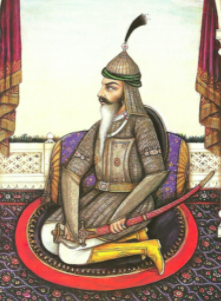
- He was a commander in Maharaja Ranjit Singh’s force.
- Ranjit Singh was founder and maharaja (1801–39) of the Sikh kingdom of the Punjab.
- He remained Governor of Kashmir, Hazara and Peshawar.
- He defeated various Afghans and established control over various regions along the boundary of Afghanistan.
- Afghanistan was called the unconquered region and it was Hari Singh Nalwa who prevented Afghans from ravaging the North-West Frontier for the first time by taking control over several regions along the Afghanistan border and Khyber pass.
- He, thus, prevented Afghans from entering Punjab through Khyber Pass, which was the main route to enter India by the foreign invaders from 1000 AD till early 19th century.
- He had defeated thousands of Hazars, a tribe of Afghanistan, with less than three times their strength.
- For his bravery and ferocity, the government of India released a stamp on the name of Nalwa in 2013.
- He was a commander in Maharaja Ranjit Singh’s force.
- Battles in which he participated:
- 1807 Battle of Kasur (now in Pakistan): He defeated Afghani ruler Kutab-ud-din Khan.
- Battle of Attock (in 1813): Nalwa along with other commanders won against Azim Khan and his brother Dost Mohammad Khan, who fought on behalf of Shah Mahmud of Kabul and this was the first major victory of the Sikhs over the Durrani Pathans.
- 1818 Battle of Peshawar: Nalwa took control over Jamrud in 1837, a fort at the entryway to Afghanistan through Khyber Pass.
- Historians maintain that if Maharaja Ranjit Singh and his commander Hari Singh Nalwa would have not won Peshawar and the North West Frontier, which is part of Pakistan now, then this area could have been part of Afghanistan and the invasions of Afghans into Punjab and Delhi would have never stopped.

